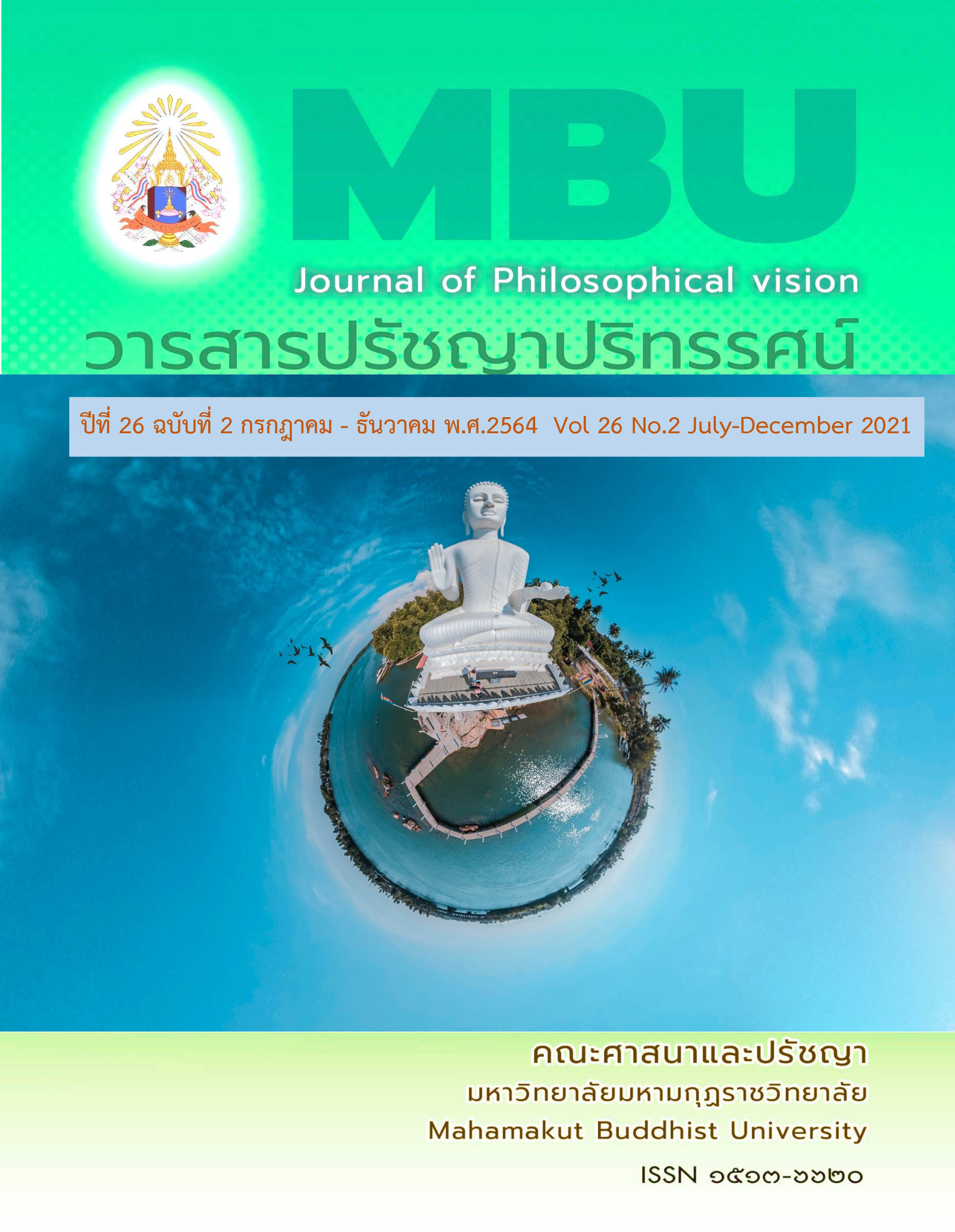Influence of E-commerce Environment Characteristics on Consumers’ Online Impulse Purchase
คำสำคัญ:
E-commerce, Online Impulse Purchase, Trust, Moodบทคัดย่อ
This research article aims to analysis influence of e-commerce environment characteristics on consumer’s online impulse purchase. Impulsive buying is a very common form of consumption in our daily lives. Since the 1950s, method of this study and the needs of testing, the statistical analysis software SPSS 15.0 and AMOS 7.0 This study used multiple regression analysis to process the data. The online impulse purchase behavior integration model established in this study helps to better understand online consumer behavior and has certain guiding significance for network marketers. Result found Consumers motivate consumers to generate buying motives and then impulse purchases. In addition, existing online shopping research shows that trust is the reason many consumers give up online purchases. Therefore, this study adds trust variables to explain consumers, especially those with less online shopping experience. In the high-risk environment of the Internet, the phenomenon of impulse purchase is not implemented after the purchase impulse. The significant findings1) environmental characteristics of the e-commerce platform as a stimulus to trigger the emotional response of online consumers 2) Consumers motivate consumers to generate buying motives and then impulse purchases. 3) Existing online shopping research shows that trust is the reason many consumers give up online purchases the high-risk environment could be barriers of impulsive shopping.
Downloads
เอกสารอ้างอิง
Adelaar, T., Chang, S., Lancendorfer, K. M., Lee, B., & Morimoto, M. (2003). Effects of Media Formats on Emotions and Impulse Buying Intent. Journal of Information Technology. 18(4), 247-266.
Baumeister, R. F. (2002). Yielding to Temptation : Self-control Failure, Impulsive Purchasing, and Consumer Behavior. Journal of Consumer Research. 28(4), 670-676.
Beatty, S. E., & Ferrell, M. E. (1998). Impulse Buying: Modeling Its Precursors. Journal of Retailing. 74(2), 169-191.
Bellenger, D. N. (1980). Profiling the Recreational Shopper. Journal of Retailing. 56(3), 77-92.
Madhavaram, S. R., & Laverie, D. A. (2004). Exploring Impulse Purchasing on the Internet. ACR North American Advances.
Clover, V. T. (1950). Relative Importance of Impulse-buying in Retail Stores. Journal of Marketing. 15(1), 66-70.
Cox, K. (1964). The Responsiveness of Food Sales to Shelf Space Changes in Supermarkets. Journal of Marketing Research. 1(2), 63-67.
Dholakia, U. M. (2000). Temptation and Resistance: An Integrated Model of Consumption Impulse Formation and Enactment. Psychology & Marketing. 17(11), 955-982.
Dittmar H.,BeattieJ. and Friese S. (1995). Gender Identity and Material Symbols : Objects and Decision Considerations in Impulse Purchases. Journal of Economic Psychology. 16(3), 491-511.
Donthu, N., & Garcia, A. (1999). The Internet Shopper. Journal of Advertising Research. 39(3), 52-52.
Engel, J. F., Blackwell, R. D., & Miniard, P. W. (1995). Consumer Behavior. 8th, Forth Worth.
Iyer, E. S. (1989). Unplanned Purchasing : Knowledge of Shopping Environment and. Journal of retailing. 65(1), 40.
Kini, A., & Choobineh, J. (1998). Trust in Electronic Commerce: Definition and Theoretical Considerations. In Proceedings of the Thirty-first Hawaii International Conference on System Sciences. 4, 51-61.
Kollat, D. T., & Willett, R. P. (1967). Customer Impulse Purchasing Behavior. Journal of Marketing Research. 4(1), 21-31.
Kollat, D. T., & Willett, R. P. (1969). Is Impulse Purchasing Really a Useful Concept for Marketing Decisions?. Journal of Marketing. 33(1), 79-83.
Madhavaram, S. R., & Laverie, D. A. (2004). Exploring Impulse Purchasing on the Internet. ACR North American Advances.
Omar, O., & Kent, A. (2001). International Airport Influences on Impulsive Shopping : Trait and Normative Approach. International Journal of Retail & Distribution Management. 29(5), 226-235.
Pastore,M.Young Americans Take Their Spending Online [DB/OL]. Retrieved January 10,2002 from,http://eyberatlas.internet.com/big_ picture/demographics /article/table
Prasad, V. K. (1975). Unplanned Buying in 2 Retail Settings. Journal of Retailing. 51(3), 3-12.
Rook, D. W., & Fisher, R. J. (1995). Normative Influences on Impulsive Buying Behavior. Journal of Consumer Research. 22(3), 305-313.
Rosen, D. E., & Purinton, E. (2004). Website Design: Viewing the Web as a Cognitive Landscape. Journal of Business Research. 57(7), 787-794.
Sfiligoj, E. (1996). Helping the Little Guy to Merchandise. Periscope, June, 30, 20.
Weinberg, P., & Gottwald, W. (1982). Impulsive Consumer Buying as a Result of Emotions. Journal of Business Research. 10(1), 43-57.
West, C. J. (1951). Results of Two Years' of Study into Impulse Buying. Journal of Marketing (pre-1986), 15(000003), 362.
Wood, M. (1998). Socio-economic Status, Delay of Gratification, and Impulse Buying. Journal of Economic Psychology. 19(3), 295-320.
Wu, C. S., Cheng, F. F., & Yen, D. C. (2008). The Atmospheric Factors of Online Storefront Environment Design: An Empirical Experiment in Taiwan. Information & Management. 45(7), 493-498.
Zhou, Q., Chen, X., & Chen, Y. W. (2014, December). Influence of Online Store Belief and Product Category on Impulse Buying: An Empirical Investigation on Consumer Perceptions. In 2014 IEEE International Conference on Industrial Engineering and Engineering Management (pp. 1453-1456). IEEE.
ดาวน์โหลด
เผยแพร่แล้ว
รูปแบบการอ้างอิง
ฉบับ
ประเภทบทความ
สัญญาอนุญาต
ลิขสิทธิ์ (c) 2021 มหาวิทยาลัยมหามกุฏราชวิทยาลัย

อนุญาตภายใต้เงื่อนไข Creative Commons Attribution-NonCommercial-NoDerivatives 4.0 International License.
บทความวิชาการและบทความวิจัย ในวารสารฉบับนี้ ถือเป็นความรับผิดชอบของผู้เขียนเท่านั้น
สงวนลิขสิทธิ์ตามพระราชบัญญัติลิขสิทธิ์






